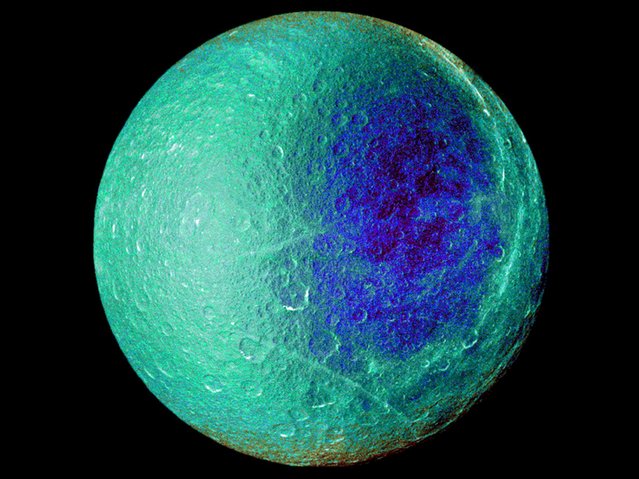
Hemispheric color differences on Saturn's moon Rhea are apparent in this false-color view from NASA's Cassini spacecraft in this March 2, 2010 file photo. (Photo by Reuters/NASA/JPL/SSI)
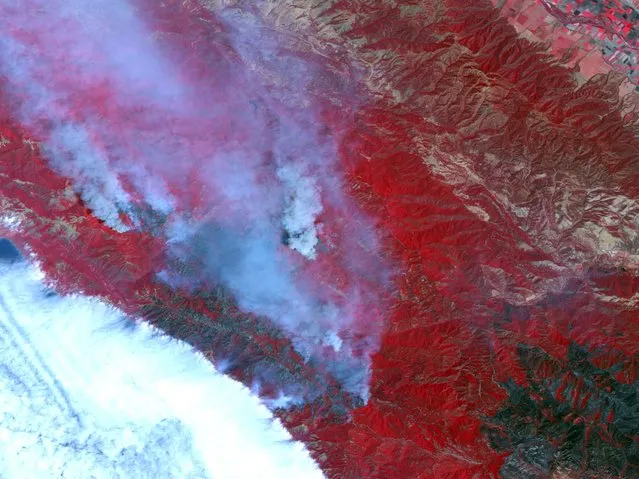
This false-color image of the Santa Lucia Range Mountains near Big Sur, California, was captured by Advanced Spaceborne Thermal Emission and Reflection Radiometer (ASTER) on NASA's Terra satellite in this June 29, 2008 file photo. The universe in false colour imagery. (Photo by Reuters/NASA/GSFC/METI/ERSDAC/JAROS and U.S./Japan ASTER Science Team)
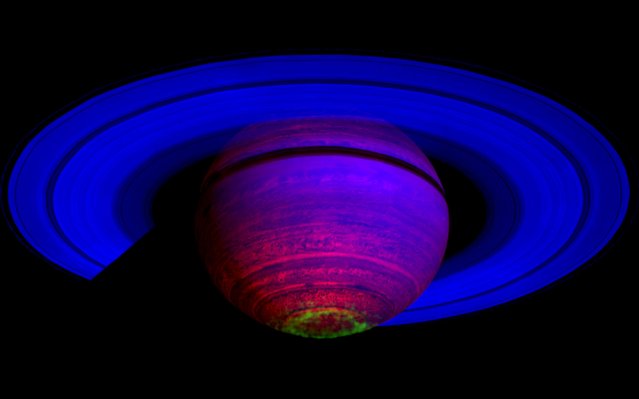
This false-color composite image, released by NASA in this September 23, 2010 photo and constructed from data obtained by NASA's Cassini spacecraft, shows the glow of auroras streaking out about 1,000 kilometers (600 miles) from the cloud tops of Saturn's south polar region. (Photo by Reuters/NASA/JPL/University of Arizona/University of Leicester)
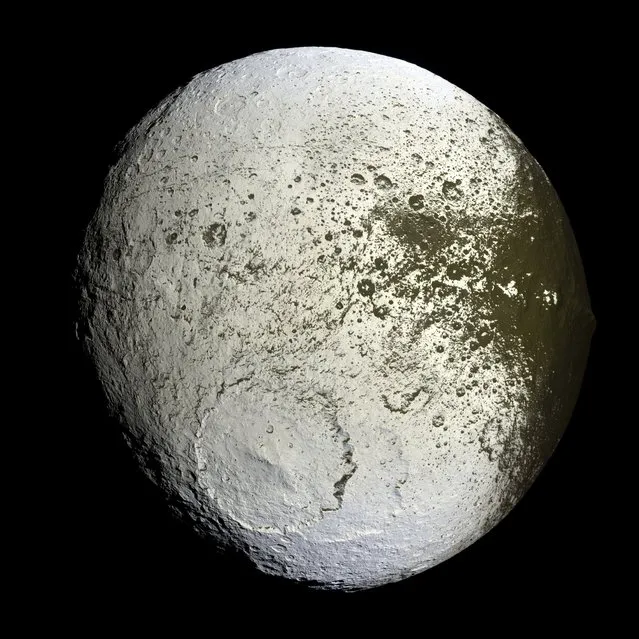
The planet Saturn's moon Iapetus is shown in the first high-resolution image taken September 10, 2007 by NASA's Cassini spacecraft. (Photo by Reuters/NASA/JPL/Space Science Institute)
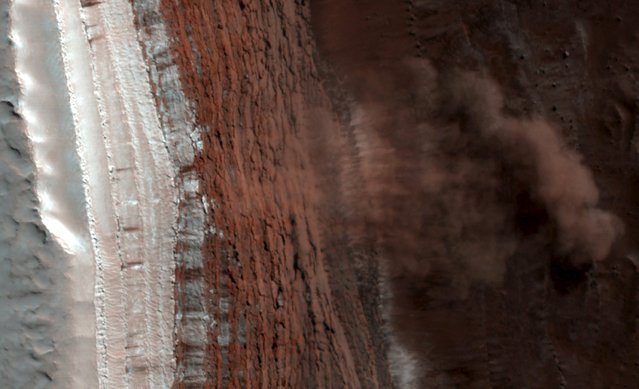
This handout shows a false color image, capturing a Martian avalanche or debris fall, in action on Mars North Polar region, which was taken by the High Resolution Imaging Science Experiment (HiRISE) camera on NASA's Mars Reconnaissance Orbiter in this February 19, 2008 file photo. (Photo by Reuters/NASA/JPL-Caltech/University of Arizona)
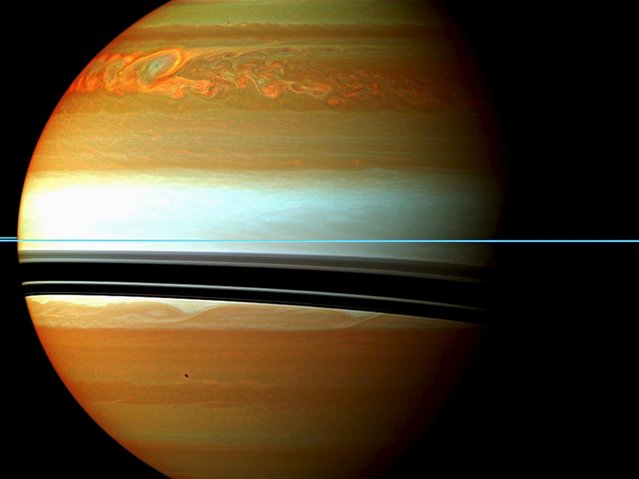
NASA handout image shows Saturn's atmosphere and its rings in a false color composite made from 12 images, captured in this January 12, 2011 file photo. (Photo by Reuters/NASA/JPL-Caltech/Space Science Institute)
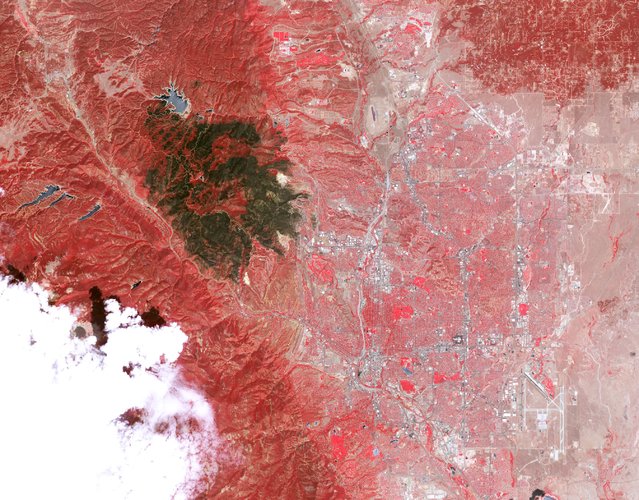
The burn scar from the Waldo Canyon Fire is pictured in this July 4, 2012 handout photo from an Advanced Spaceborne Thermal Emission and Reflection Radiometer (ASTER) on the Terra satellite by NASA, in Colorado Springs, Denver. (Photo by Reuters/NASA)
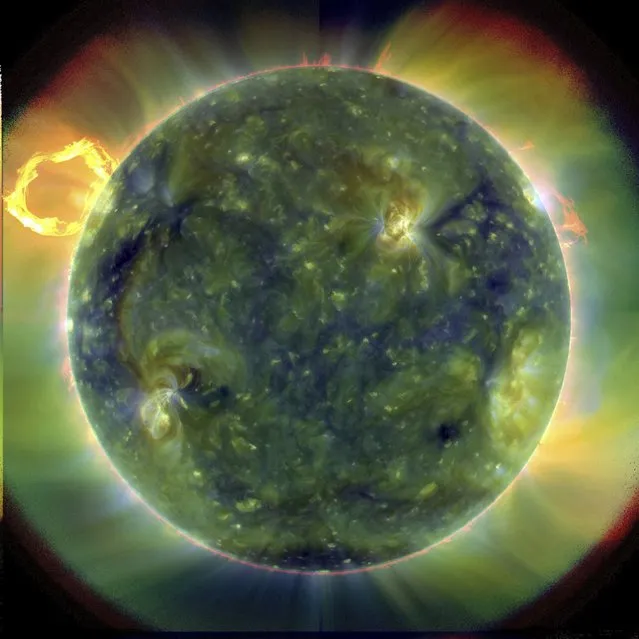
A extreme ultraviolet image, using false colours to trace different gas temperatures, of the sun taken by the Solar Dynamics Observatory (SDO) in this March 30, 2010 file photo. (Photo by Reuters/NASA)

The Advanced Spaceborne Thermal Emission and Reflection Radiometer (ASTER) on the Terra satellite acquired this view of the burn scar from the Black Forest fire in Colorado Springs, Colorado as seen in this NASA handout image taken June 21, 2013. (Photo by Reuters/NASA/GSFC/METI/ERSDAC/JAROS)
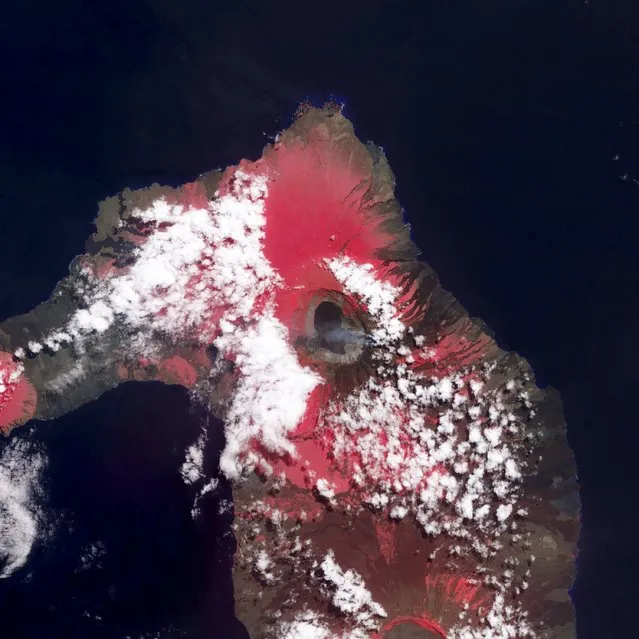
Wolf Volcano, the highest volcano in the Galapagos Islands, is pictured erupting for the first time in 33 years in this June 11, 2015 NASA satellite handout photo by the ASTER instrument on NASA's Terra satellite obtained by Reuters June 30, 2015. (Photo by Reuters/NASA)
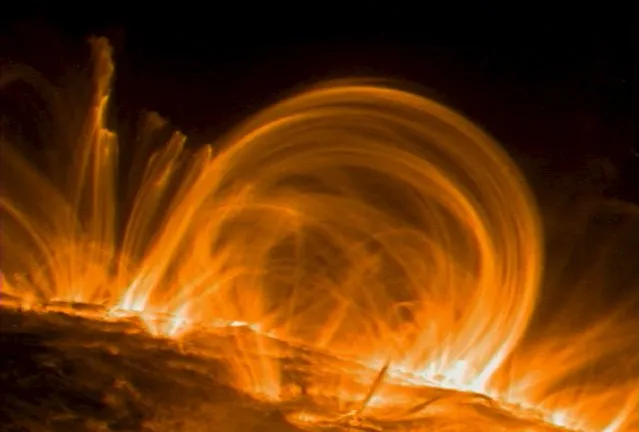
Giant fountains of fast-moving, multimillion-degree gas in the outermost atmosphere of the Sun have revealed an important clue to a long-standing mystery - the location of the heating mechanism that makes the corona about 300 times hotter than the Sun's visible surface in this September 26, 2000 file photo. (Photo by Reuters/NASA)
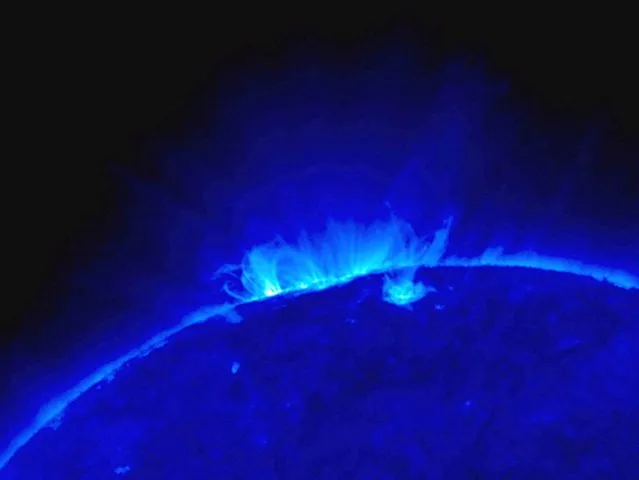
A close-up of loops in a magnetic active region of the sun is shown in this false color image in this December 4, 2006 file photo. (Photo by Reuters/NASA)
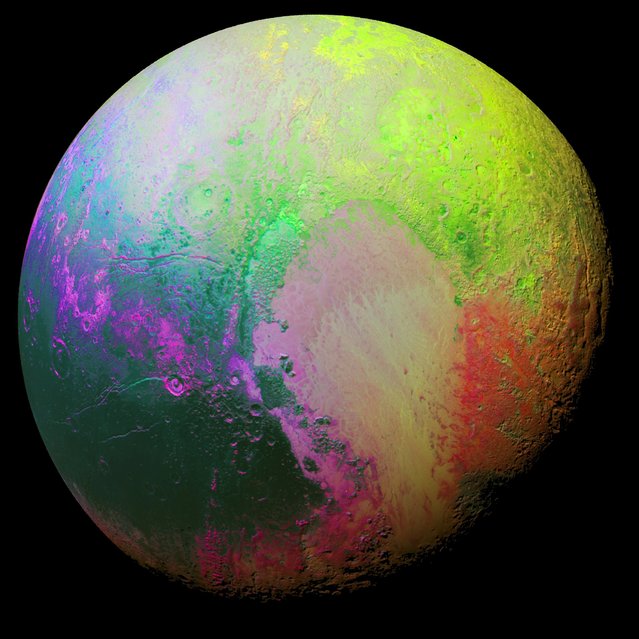
A false color image of the planet Pluto using a technique called principal component analysis to highlight the color differences between Pluto's distinct regions is seen in this picture produced by New Horizons scientists in this November 12, 2015 file photo. (Photo by Reuters/NASA/JHUAPL/SwRI)
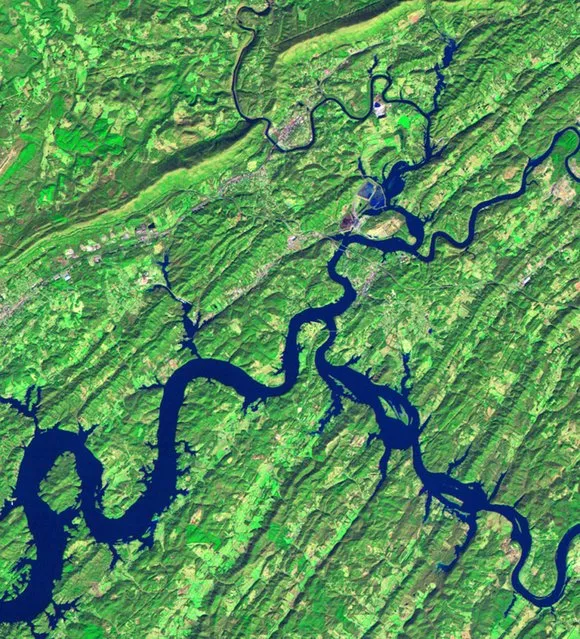
This satellite file image created by Thematic Mapper on NASA's Landsat 5 satellite images, shows Tennessee's Kingston Fossil Plant and its surroundings on November 20, 2008, a month before the spill. In this false-color image, water appears blue and vegetation appears green. (Photo by Reuters/NASA)
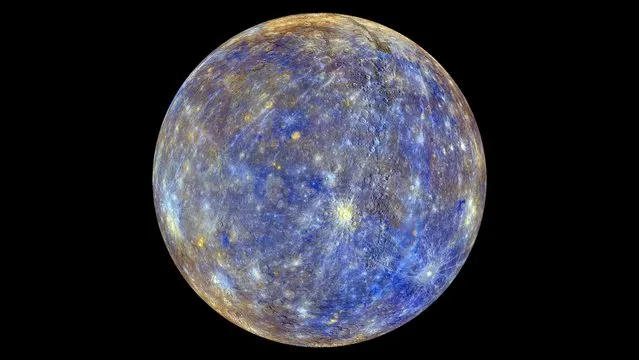
Mercury is pictured in this undated NASA handout photo obtained by Reuters February 22, 2013. (Photo by Reuters/NASA/Johns Hopkins University Applied Physics Laboratory/Carnegie Institution of Washington)
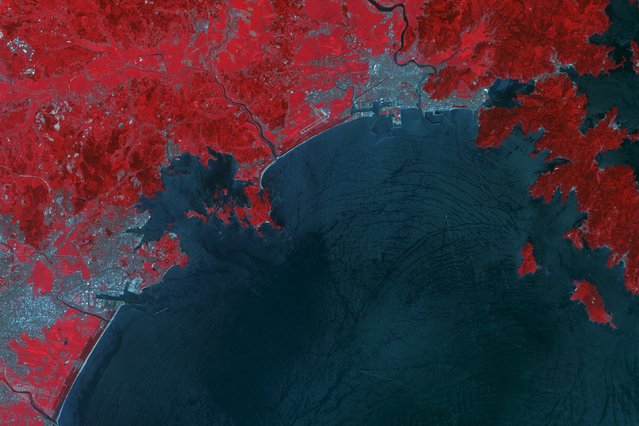
A false colour image taken by NASA's Terra satellite shows the city of Ishinomaki, northern Japan (top R) in this August 8, 2008 file photo. (Photo by Reuters/NASA)
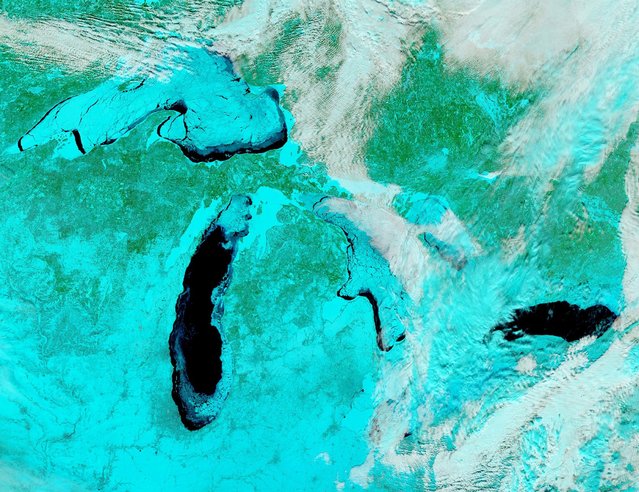
A false-colored image of the frozen Great Lakes is seen in this February 19, 2014 handout taken by the Moderate Resolution Imaging Spectroradiometer (MODIS) aboard NASA's Aqua satellite. (Photo by Reuters/NASA)
16 Nov 2015 08:14:00,
post received
0 comments
